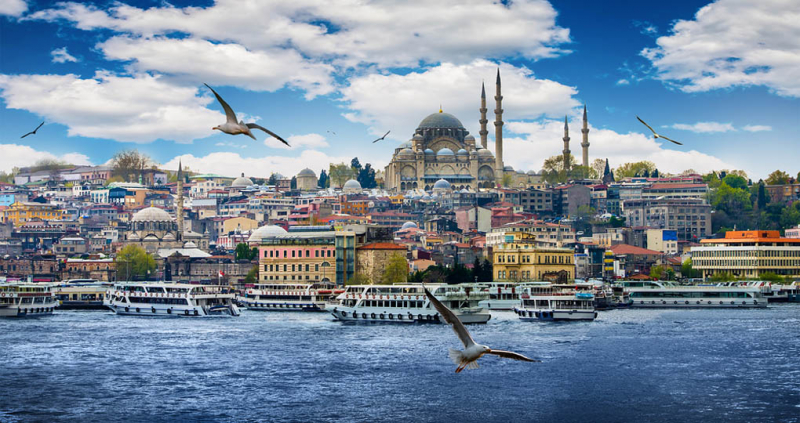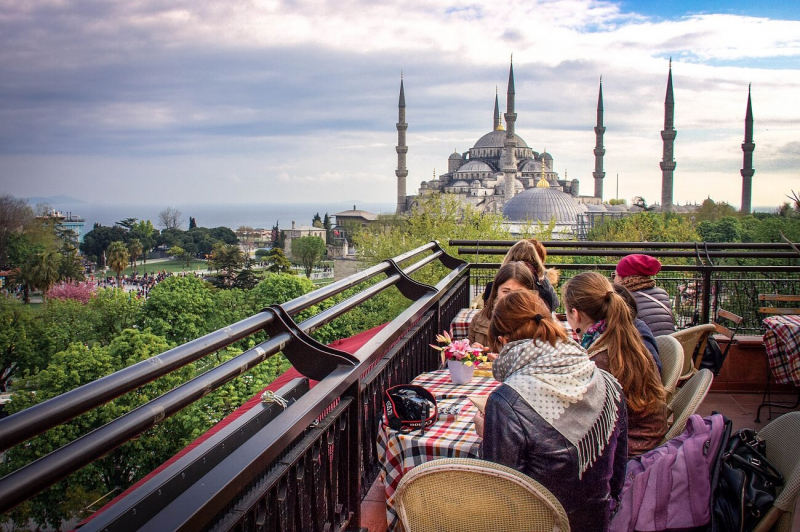Istanbul

Connecting Europe and Asia, as well as East and West, Istanbul has a rich and intricate history. The illustrious history of this city, which served as the Ottoman and Byzantine empires' respective capitals. Additionally, it combines elements of its past and present to provide an unusual mix of design, such as a glass tower adjacent to a Byzantine church or a vibrant bazaar beneath a shopping center. The surrounding environment is likewise magnificent. The city is divided in two by the Bosphorus, a strait that joins the Black Sea in the north with the Sea of Marmara in the south. From the azure waters, visitors may see a skyline of modern buildings, steeples, and domes.
Istanbul appears calm from a distance, but the interior is delightfully chaotic. Discover the crowded bazaar stalls and bustling streets that have defined the city for hundreds of years. You'll be unable to process the sights, sounds, and smells as drivers jostle for place and shops haggle in a barrage of conversation. In relation to odors... As you explore, sample some of the street cuisine, including döner, which is Istanbul's take on fast food. And as night falls, you'll see that Istanbul loses some of its formal façade to expose a vibrant nightlife. Istanbul has long been a crossroads of cultures and continents, and it continues to astound tourists with its quick pace, rich past, and vibrant present.
Istanbul is best visited in the months of March through May and between September and November. Attraction crowds are reasonable, hotel costs are typical, and daytime temperatures are often in the 60s and 70s around that time. The temperatures spike into the low 60s to low 80s during peak season, which runs from June through August, while lodging costs rise to keep up with the demand from incoming tourists. The least expensive months to travel are December through February, but because of Istanbul's wet, snowy, and frigid weather (highs in the 30s to high 50s), you'll need to pack an umbrella and wear appropriate clothing.
Turkish food can be characterized as a combination of Mediterranean, Middle Eastern, and Asian ingredients. Kebabs and mezes, or little servings that resemble tapas, are particularly well-known and well-liked in Istanbul. Meats, legumes, fresh vegetables, and nuts are typically the main ingredients in dishes. In addition, yogurt is a key ingredient in a lot of Turkish dishes and is frequently served alongside meat dishes and breads. Among locals and out-of-town visitors, street cuisine is also highly well-liked. Examples include döner, which is typically cooked with lamb meat, and simit, a bread that resembles a bagel and works well as a portable snack. You can get through all the sightseeing on a Turkish coffee, then for dessert, try some Turkish Delight candies.
Location: in an intercontinental city, spanning the Bosphorus.
Ranking:
- #12 in Best Cheap European Vacations













